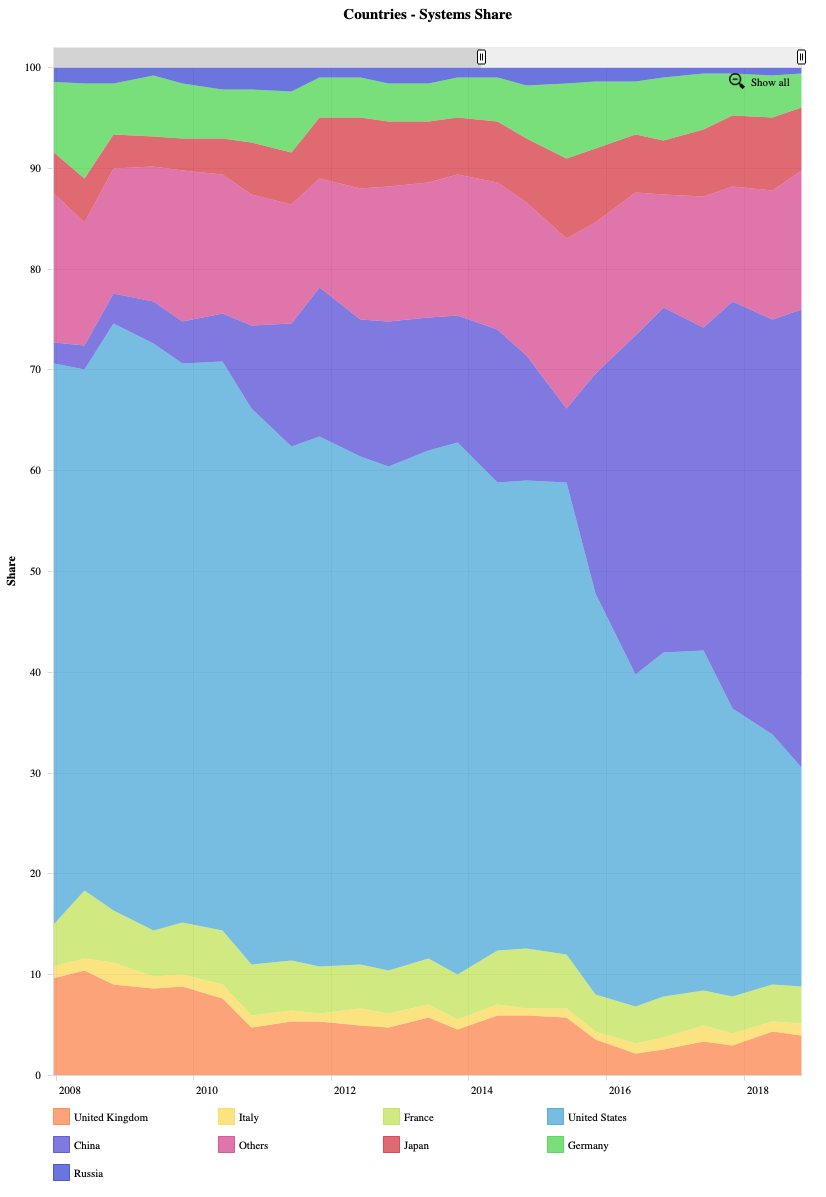This annual Supercomputing conference is a showcase for the field of high-performance scientific and mathematical computing, featuring a first-rate peer-reviewed technical program, tutorials, workshops, and a massive exhibit hall where universities, national laboratories and computer vendors from around the world exhibit their research, hardware and software. This year’s conference, SC18, which is being held in Dallas, Texas, has attracted well over 10,000 attendees. The conference is co-sponsored by the Association for Computing Machinery (ACM) and the Computer Society of the Institute of Electrical and Electronic Engineers (IEEE).
Awards
Four prestigious professional society awards are presented at the SC18 conference. This year’s awardees include:
- David E. Shaw received the Seymour Cray Engineering Award from the IEEE Computer Society. Shaw, the billionaire former CEO of the D. E. Shaw hedge fund, has for the past 12 years led a team to develop ANTON, a special-purpose computer system for protein folding and other biomedical computations. His team has twice received the Gordon Bell prize (see below) for landmark calculations in the biomedical field using the ANTON system.
- Sarita Adve received the Ken Kennedy Award from the ACM and the IEEE Computer Society. Adve, a professor of computer science at the University of Illinois, Urbana-Champaign, co-developed the memory models used in the C++ and Java programming languages, and is known for related work in hardware-software interfaces, system resiliency, cache coherence, reliability and power management.
- Linda Petzold, a professor at the University of California, Santa Barbara, received the 2018 Sidney Fernbach Award from the IEEE Computer Society. Petzold is best known for her work in the numerical solution of differential-algebraic equations, which have applications in materials science, computational biology and medicine.
- Two teams shared the Gordon Bell Prize from the ACM. One team, from the Oak Ridge National Laboratory, developed a supercomputer program that processes huge amounts of genome data to better understand the genetic basis of chronic pain and opiod addiction. The other group, based at the Lawrence Berkeley National Laboratory, developed a neural-net-based supercomputer program to identify extreme weather patterns in climate simulations.
This is the first year in which two women (Adve and Petzold) were awarded one the four major professional society awards in the high-performance computing field.
The Top 500 list
Another announcement at the SC18 conference was the latest edition of the Top500 list of the world’s most powerful supercomputers.
Number one on the November 2018 list is the Summit supercomputer at Oak Ridge National Laboratory in the U.S. The summit system consists of more than 4,600 individual servers, each containing two 22-core IBM Power9 processors and six NVIDIA Tesla V100 graphics processing unit accelerators, all connected with a Mellanox 100 Gb/s interconnection network. The system has a potential peak performance of 200 Pflop/s (2 x 1017 floating-point operations per second). Its performance on the Linpack benchmark, which is used for the Top 500 ranking, was 143.5 Pflop/s (1.435 x 1017) floating-point operations per second.
Number two on the November 2018 list is the Sierra system, another IBM-based supercomputer, this one at the Lawrence Livermore National Laboratory in the U.S. The number three system is the Sunway TaihuLight system, at the National Supercomputer Center in Wuxi, China. It consists of 40,960 Chinese-designed SW26010 manycore processors.
The remaining top ten supercomputers are: (#4) the Tianhe-2A supercomputer in Guangzhou, China; (#5) the Piz Daint supercomputer in Lugano, Switzerland; (#6) the Trinity supercomputer in Albuquerque, New Mexico; (#7) the AI Bridging Cloud Infrastructure supercomputer in Tokyo, Japan; (#8) the Leibniz Rechenzentrum supercomputer near Munich, Germany; (#9) the Titan supercomputer in Oak Ridge, Tennessee; and (#10) the Sequoia supercomputer in Livermore, California.
For full details on these supercomputers, see the Top500 site.
Although the U.S. still dominates the Top500 list, including the top two systems, China has made remarkable progress in recent years. In the November 2018 list, 227 of the 500 systems are in China, versus 109 in the U.S., 38 in Japan, and 20 in the U.K. By contrast, in 2008 only 12 of the top 500 systems were in China. If one counts the share of total performance, then the U.S. leads with 37.7%, versus 31% in China, and 7.7% in Japan. In 2008, China’s share was a mere 2.5%.
The following graphic shows the remarkable advance of China’s presence in the Top 500 list over the past ten years:
